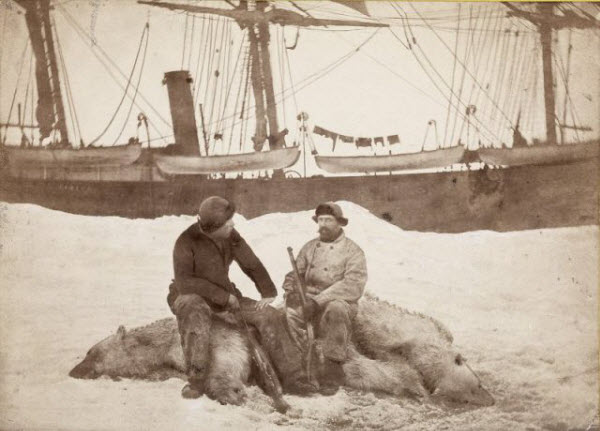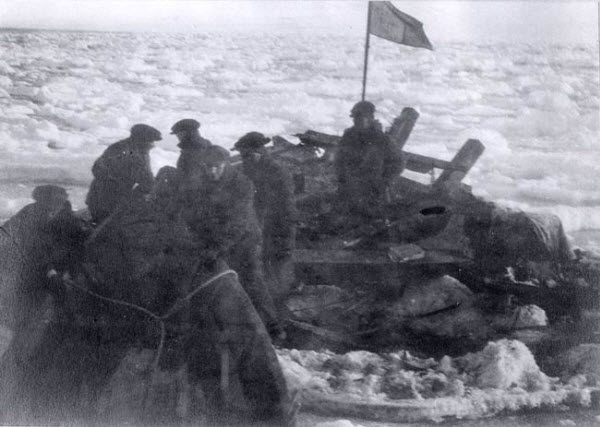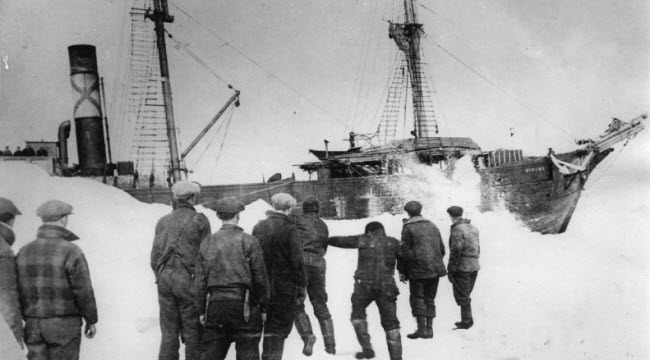Sometimes, film sets can be dangerously perilous, leading to severe injuries and even fatalities among cast and crew. A notable example is the production of the famous film “Titanic” directed by James Cameron, where actress Kate Winslet nearly drowned, and several cast members sustained significant injuries, including broken ribs and facial bones. Another tragic case involved the second installment of “The Expendables,” where one stunt performer died and another was injured. After filming, both Sylvester Stallone and Arnold Schwarzenegger underwent shoulder surgery. Despite these contemporary incidents, they are relatively rare due to rigorous safety measures in place today. In contrast, early Hollywood productions were fraught with danger, and filmmakers often exposed their teams to extreme and hazardous conditions, leading to numerous catastrophic accidents, as exemplified by the film “The Viking.”
Released in 1931, “The Viking” is notorious for being one of the bloodiest films in cinema history, with 27 crew members losing their lives during its production. This film was celebrated for being the first ever to feature synchronized sound and dialogue recorded on location. Paramount Pictures allocated a budget of $100,000 for it. The film’s plot revolves around a dramatic expedition to hunt seals along the coast of Newfoundland in Canada. To achieve accurate and realistic depictions of seal hunting on ice, director “Faryk Freesil” and his crew used real hunting vessels and began filming near the Grand Banks and Labrador.

After completing the film, Freesil organized a special screening for friends and crew. Although satisfied with the footage, he felt it lacked high-quality shots of the Canadian ice fields. Consequently, he and some crew members boarded the “SS Viking” in early March 1931 to join the annual seal hunt off the coast of Labrador, capturing incredible footage of icebergs and dramatic seal hunts.
On March 13, the ship was trapped in ice near the “Horse Islands” off the coast of Newfoundland. While waiting for the ship to be freed, Freesil and his crew explored the thick ice and filmed invaluable footage of the immobilized vessel. After two days, the crew realized their manual efforts to free the ship were futile due to the ice’s thickness. They decided to use explosives to break the surrounding ice. Twenty-five crates of dynamite had been stored in a room below deck, which the crew began preparing.

Tragically, one of the men responsible for preparing the explosives accidentally ignited a crate. As a result, all the dynamite crates exploded sequentially, completely tearing apart the rear of the ship. The massive explosion killed 27 men instantly, including the unfortunate director, whose body was never recovered. Some of the bodies were torn apart by the blast, while others were buried under snow. Survivors either walked across the ice to the Horse Islands or were rescued by ships dispatched to the area.

Despite the tragic deaths of Freesil and many of his crew, “The Viking” was completed by another director, George Milford, and officially released a few months after the accident. The film received mixed reviews: critics and audiences were impressed by the breathtaking shots of Canada’s icy landscapes and the tragic seal hunting scenes. However, the story depicted in the film was criticized as unrealistic and flawed. To this day, the film remains infamous due to the catastrophic number of deaths that occurred during its production.
